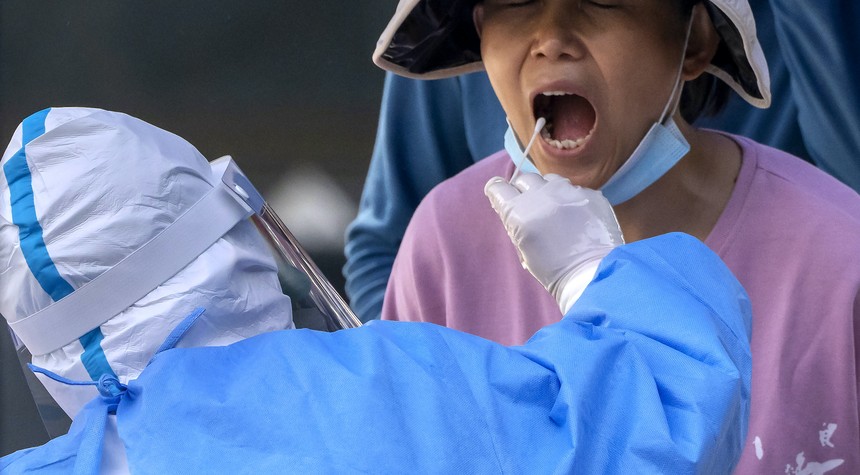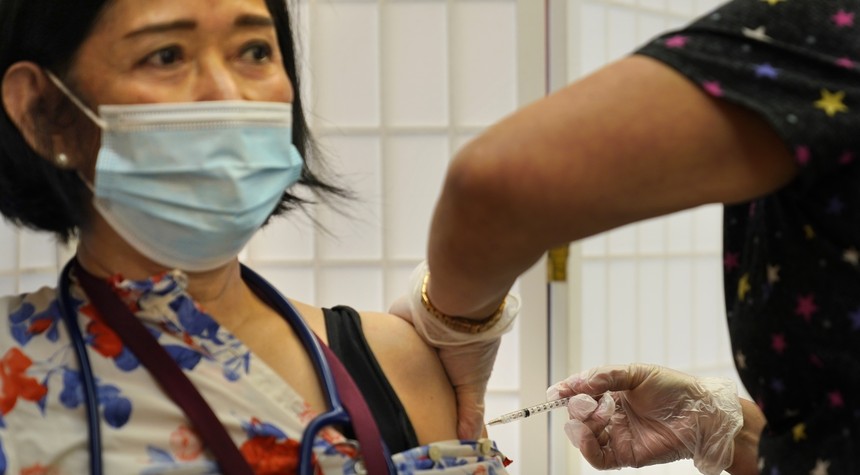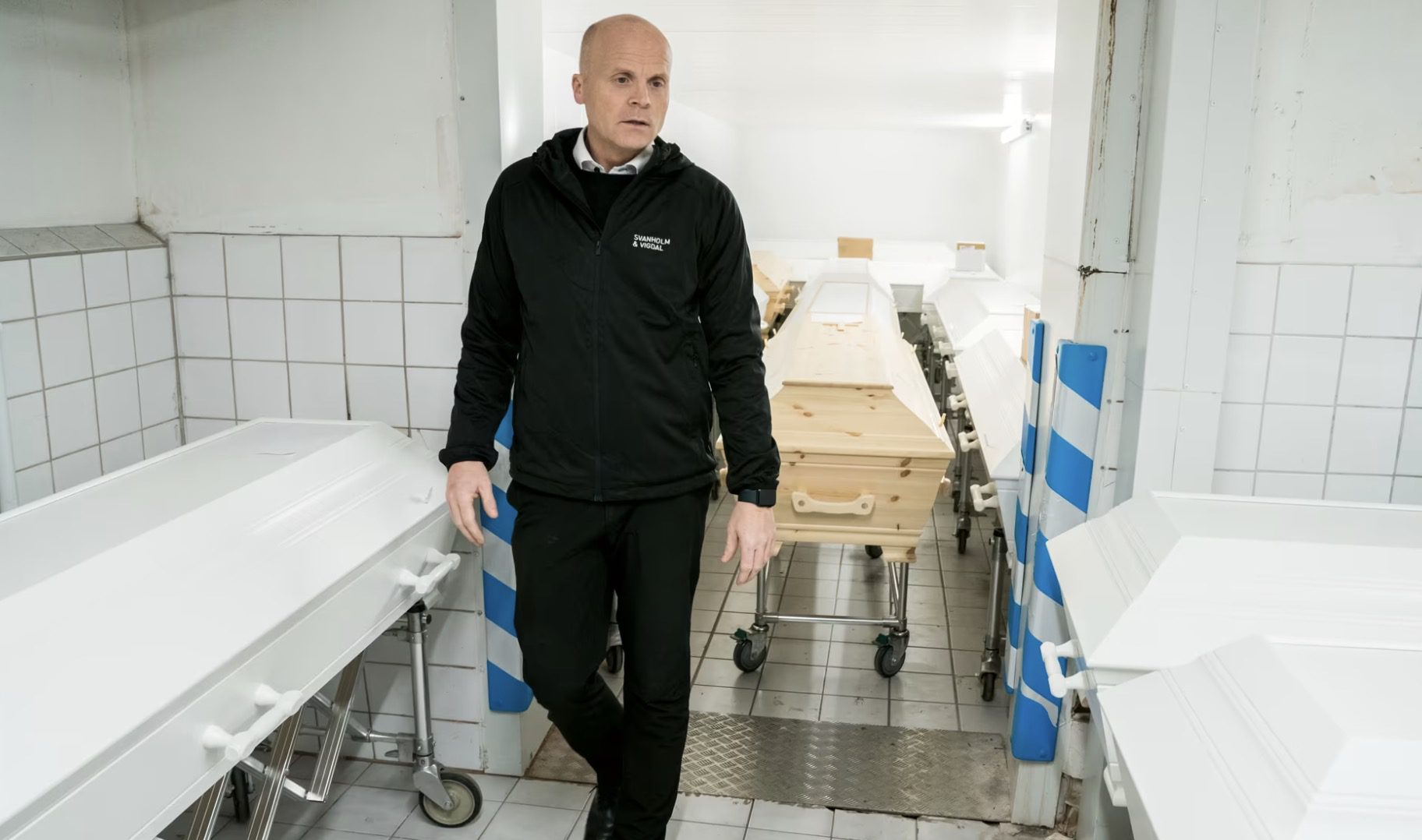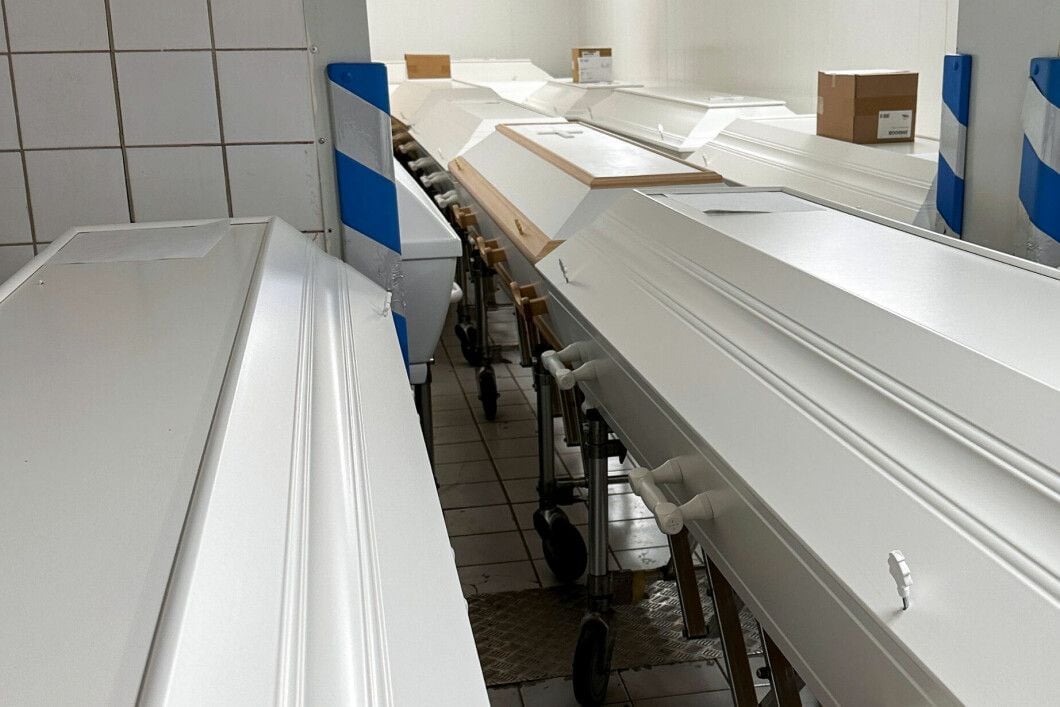
You might recall at the beginning of the pandemic that China was praised to the skies by the western media for keeping its COVID-19 death toll so small. But everyone with an ounce of sense knew that China was cooking the books and that there were far more deaths than they were letting on.
Now, China has almost completely lifted restrictions in the nation of two billion people and cases of the virus have exploded. Authorities are now expecting 800 million cases of COVID this winter.
Already, according to several reports, crematoria are overflowing and funeral directors are saying it’s taking five days to bury the bodies.
“The number of bodies picked up in recent days is many times more than previously,” a staffer who did not give their name said.
“We are very busy, there is no more cold storage space for bodies,” they added.
“We are not sure (if it’s related to Covid), you need to ask the leaders in charge.”
In the capital Beijing, local authorities on Tuesday reported just five deaths from Covid-19 — up from two the previous day.
Outside the city’s Dongjiao Crematorium, AFP reporters saw more than a dozen vehicles waiting to enter, most of them hearses or funerary coaches.
Delays were obvious, with a driver towards the front of the queue telling AFP he had already waited several hours.
One way China is cooking the books is by changing the definition of a COVID death. According to the Wall Street Journal, the definition is unique in the industrialized world.
“Deaths from other illnesses and underlying causes such as cardiovascular disease and heart attack are not classified as Covid-related deaths,” Wang Guiqiang, head of the infectious-disease department at Peking University First Hospital, said at a National Health Commission press briefing.
That definition is unusually narrow by global standards. The Beijing-ruled territory of Hong Kong, for example, defines a Covid-related death as one in which a patient dies within 28 days of first testing positive for the virus, even if the ultimate cause of death isn’t directly related to Covid.
The U.S. Centers for Disease Control and Prevention distinguishes deaths depending on whether Covid is an underlying or a contributing cause, though both are included in the nation’s pandemic toll.
A retiree living in Beijing said his 60-year-old diabetic cousin died suddenly over the weekend, a few days after testing positive for Covid before a scheduled surgery. The hospital listed diabetes as the cause of death, he said.
No matter how you define a COVID death, China is about to lose a lot of its citizens. Those 800 million positive tests this winter could turn into a half million deaths given the lack of vaccinations among the Chinese elderly and other vulnerable populations.
Related: COVID-19 Could Be Tied to China’s Bioweapons Program: GOP Report
China’s 180-degree about-face on its COVID mitigation strategy is a gamble. The Chinese Communists are betting they will be more successful at hiding the true cost of their policy in lives than they were in keeping people locked down, unable to leave their homes.
Why should the U.S. and the west care about Chinese COVID deaths? China has never exposed most of its population to the coronavirus. Consider China a gigantic Petrie dish with two billion chances for the coronavirus to mutate. It may mutate into something more benign or it could mutate into the next black death. More likely, the virus will figure out a way to defeat the current regimen of vaccines and drugs designed to fight it and start killing people again in large numbers.
The good thing is that we now have a handle on how the bug works and should be able to design drugs or perhaps a less dangerous vaccine to counter it fairly quickly. We’re in an arms race with the most successful creature God ever created on earth. We were behind for a while but we’re catching up and eventually, as in our war on polio, measles, mumps, and other diseases, we’ll win.
https://pjmedia.com/news-and-politics/rick-moran/2022/12/21/chinas-crematoria-are-overflowing-but-ccp-authorities-say-only-seven-were-covid-deaths-n1655336***************************************************************
Administration Finally Mentions Millions of Working-Age Americans Missing from the Labor Market, but Where Did They Go?

Insurance industry leaders globally started to sound the alarm about a high rate of excess mortality and disability among working-age Americans months ago. This trend has gone underreported by the media and unacknowledged by government leaders for months. Yet, it partially explains why the labor market remained so tight, forcing rising wages in an economy riddled with record inflation. Federal Reserve Chairman Jerome Powell finally brought it up in recent remarks.
Powell noted in his speech last week that the unemployment rate remains near a 50-year low. During his back and forth with reporters, Powell finally acknowledged that part of this is structural and not the result of Biden’s excellent economic policy.
We don’t see — despite very high wages and an incredibly tight labor market, we don’t see participation moving up, which is contrary to what we thought. So the upshot of all that is the labor market is actually — it should — it’s 3 1/2 million people at least smaller than it should have been based on pre-pandemic. Just assume population and reasonable growth and aging of the population, our labor force should be 3 1/2 million more than it is.
He credited part of the shortage to accelerated retirements, saying that people are choosing not to return to work at higher rates than expected. He cited a statistic of up to 2 million people retiring early.
Then Powell said that almost half a million who should be in the workforce died of COVID-19. That is a significant overestimate, according to CDC data. There have been 1,083,279 COVID deaths, and Americans between the ages of 18 and 65 do not equal half of the total. According to the CDC, less than one-quarter of a million working-age Americans died with or of COVID. And not all of those deaths are excess deaths. So a labor force reduction of 500,000 due to Covid is an absurd assertion.
Edward Dowd, Founding Partner of Phinance Technologies and former Managing Director for BlackRock, has a very different assessment of the data on “retirements” and deaths. Dowd has analyzed the excess death and disability trend among working-age people since it emerged in actuarial data. While his total number of missing American workers is similar to Powell’s, where they come from is different.
“If you’re wondering why you’re seeing ‘Help Wanted’ signs and why it’s hard to hire people and why things are starting to get delayed or what have you, it’s gonna have knock-on daisy chain effects, I think, for years to come,” Dowd said in an interview on the Highwire. “It’s like a glacial Mad Max.”
Dowd’s data comes from the insurance industry, the CDC, and the Bureau of Labor Statistics. The insurance industry data covers people employed in large and mid-size companies that offer supplemental life and disability programs. The employer often pays for these policies as part of a total benefits package. The other sources are population-level data.
In testimony for a roundtable on COVID vaccines convened by Senator Ron Johnson (R-Wis.), Dowd cites long-term research showing that people employed and covered by group life insurance are generally healthier than the rest of the population. They experience less disability and death. Part of this evidence is the profitability of group life products for insurance companies. They do not pay out at the rate of individual policies for the general population.
People on these policies have a mortality rate of about one-third that of the U.S. population. Yet Dowd’s review of data from the Society of Actuaries shows a stark shift in excess mortality from elderly Americans to younger working-age Americans during 2021. Beginning in May of 2021, being employed was detrimental to your health, according to group life insurance data. This data shows the shift in excess mortality between working adults and the general population in the third quarter of 2021.

In Dowd’s analysis, after May 2021, Americans aged 16 to 64 who were employed experienced a 25.8% increase in new-onset disabilities. The general population increase was 11%. Dowd’s findings amount to an absolute increase of at least 1.2 million working adults, or the equivalent of the populations of Vermont and Wyoming, who are now disabled. That equals more than one-third of the people Powell is missing in the labor force. Many left the workforce due to disability, not retirement.
Excess mortality was even more startling. “In 2021, in ages 25 through 64, the employed people of our nation covered under group life experienced a 40% excess mortality rate. As quoted by a CEO of an insurance company, just a 10% increase in excess mortality is a three standard deviation event or a once-in-a-200-year flood. So, 40 is off the charts,” Dowd told the roundtable convened by Sen. Ron Johnson (R-Wis.). The excess mortality in the general U.S. population during the same period was 31.7%.
Previous to 2021, the general population would have exceeded group insurance plan participants in new disabilities and deaths. Something changed in 2021. This chart shows the group life insurance claims compared to the baseline. Beginning in the third quarter of 2021, the non-COVID excess mortality in group life participants spikes and remains at nearly 20% until the end of the year.

Dowd points out that 2021 brought on a mass COVID-19 vaccination campaign. This included employer mandates which would only affect employed Americans, many of whom are on group insurance plans. President Joe Biden announced his federal mandate in early September of 2021. In the same quarter, working Americans aged 26-40 experienced a catastrophic increase — 84% — in excess mortality.
Another strange finding is the type of employee who died during the pandemic.
“The Grey-collar group had the lowest actual-to-expected ratios (A/Es) relative to baseline over the pandemic period at around 17%, followed by the Blue-collar group at 19%. The White-collar group continues to have the highest mortality A/E relative to baseline at 23% during the pandemic period.”
The laptop class, who are generally healthier than their blue-collar counterparts, died at higher rates. Based on their level of education, they were also more likely to take the vaccine. The people working from home are the most likely to die? Seems like a reversal worth closer examination.
“We’re open to discussion to see what could be the possible causes,” Dowd told the roundtable. “But what I find interesting and curious is this excess mortality continues. The disabilities continue. And our health authorities have no interest in trying to figure out what is going on. This should be a national story in my mind,” Dowd told Johson’s roundtable. Dowd may get his wish with Powell’s acknowledgment of the structural problem of not enough people.
https://pjmedia.com/news-and-politics/stacey-lennox/2022/12/20/administration-finally-mentions-millions-of-working-age-americans-missing-from-the-labor-market-but-where-did-they-go-n1654267
Funeral homes in Norway sound the alarm as they struggle to store all the dead people as a result of Norway’s skyrocketing excess mortality rate.
The number of people needing funeral services in Trondheim City, Central Norway, has risen dramatically, according to the local newspaper Dagbladet Trondheim.
Lars Svanholm, the fourth-generation general manager of Trondheim’s largest funeral home, Svanholm & Vigdal Gravferd, has said that the funeral home’s century-long history has never seen anything like the current number of deaths.
“It is a marked increase, and we have not experienced anything like it in four generations,” Lars Svanholm told Dagbladet.

Svanholm believes that the funeral home has seen a 30 percent increase in deaths this year compared to last year.
“We have not had such an increase since the company started in 1922,” said Svanholm to local tv.
In order to deal with the increasing number of dead, they have opened a cool emergency room in a garage.
Capacity constraints forced families to wait more than two weeks to bury their loved ones.

“Garages like this are used as stretcher rooms when demand is high. Then the cars are driven out, and cooling systems are installed,” said TV2.
More from TV2:
The constantly high demand has had unusual consequences for Svanholm and the agency’s 26 employees.
“For us, it has created enormous challenges with everything from refrigerator capacity to access to ceremony rooms, so there has been some waiting time for survivors,” says Svanholm.
At times there has been such a high demand that they have had to use garages and other backup solutions such as cold rooms. This has previously only been common in acute crises.
“We have a crisis preparedness if there are large numbers of deaths in a short time. In plane crashes and other major accidents, it is used, but now we have had to use it also with ordinary deaths,” says Svanholm.
“I don’t think the peak has been reached.”
According to Svanholm, survivors risk waiting 15-20 days between death and burial, because churches and other ceremony rooms are busy.
“The grieving process can be characterized by the bereaved having to wait longer than normal. Some people are disappointed when they may have to wait an extra week to have a funeral, but they understand the problem,” says Svanholm.
Although there are busy days, he does not think the peak has been reached.
“We are a little nervous about the upcoming flu season, and hope people understand that they may have to wait a little. When they are in the middle of a death, this is not the kind of message they want to receive.”


No comments:
Post a Comment